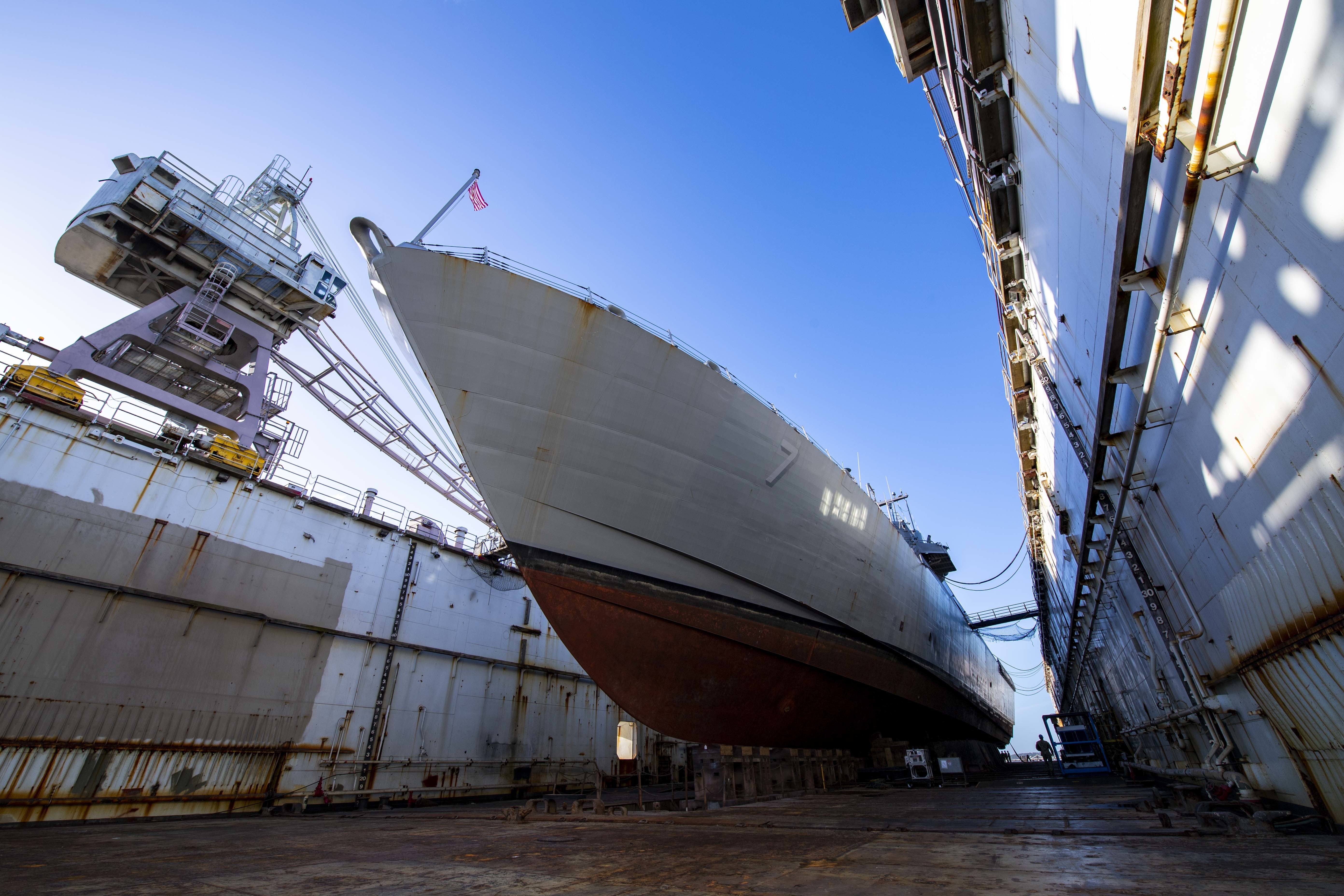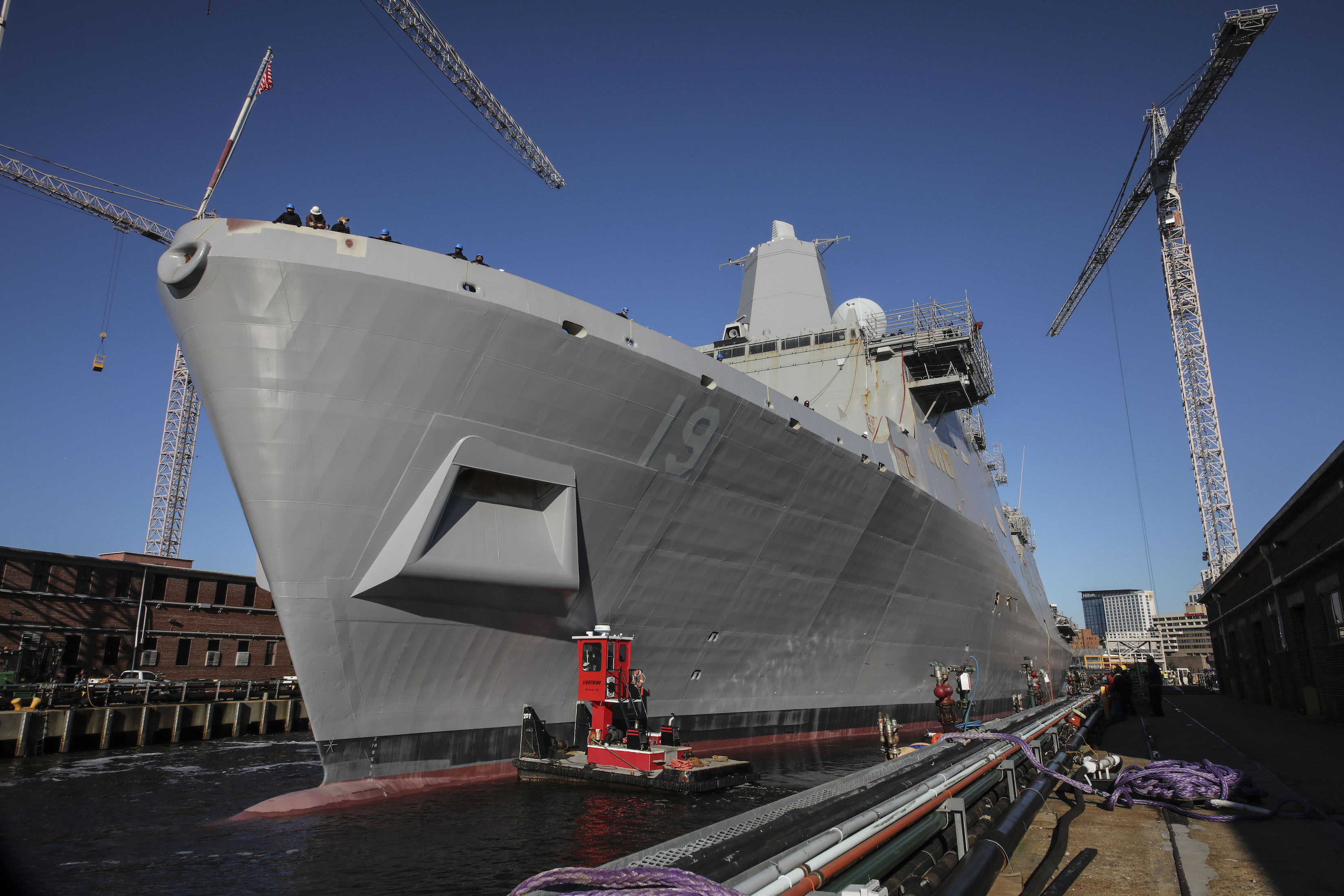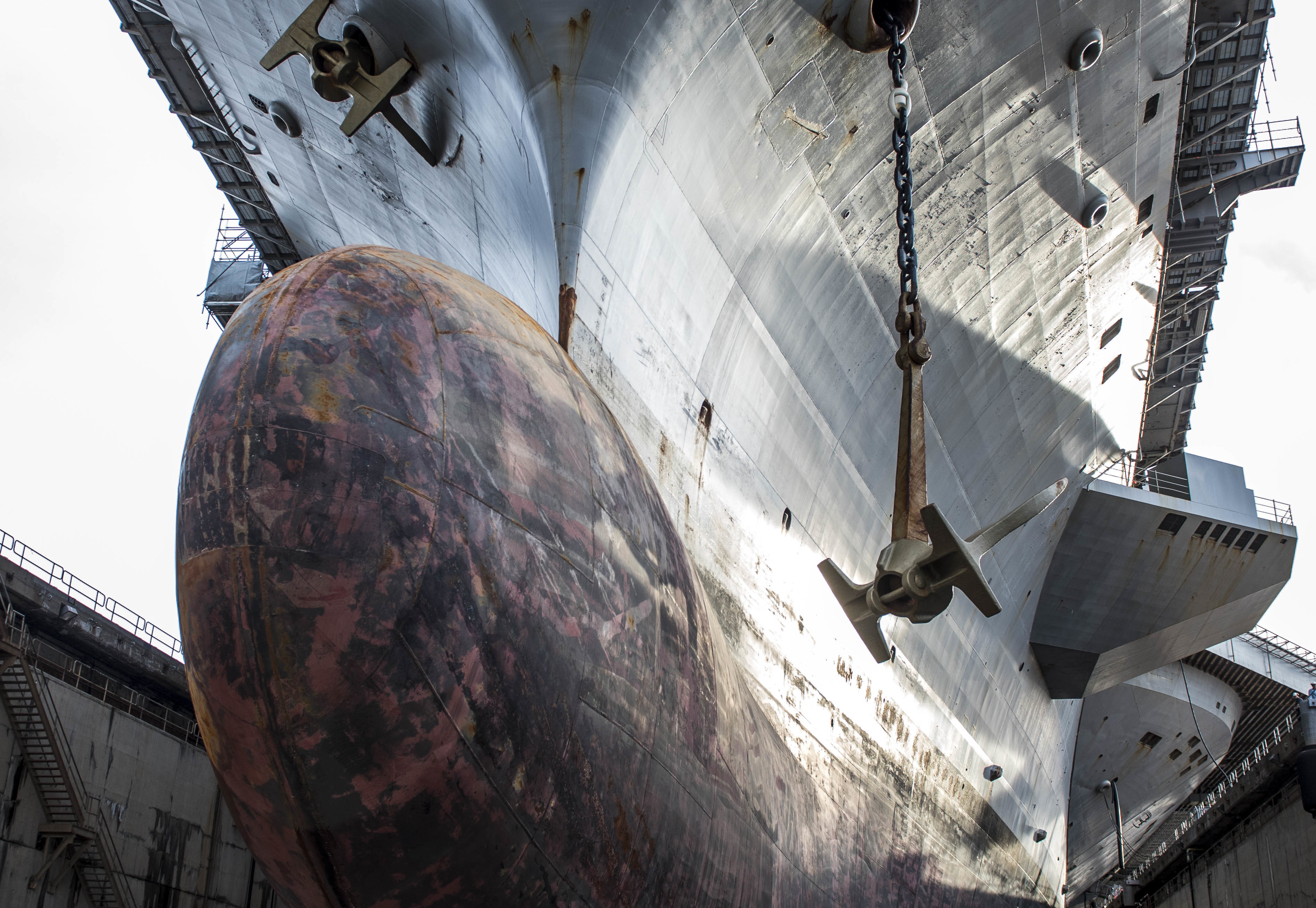
THE PENTAGON – The Navy is already making hard decisions – curtailing training for air wings not imminently deploying, canceling planned ship maintenance availabilities – as the specter of a full-year continuing resolution looms.
Under continuing resolutions, the Navy is limited to the previous year’s spending levels for each budget line item, cannot increase the quantity of an acquisition program and cannot start a new program. The Navy also gets funding in smaller increments when short-term CR after short-term CRs are passed, instead of getting the full bucket of money upfront like they would under a regular appropriations bill.
Regardless of the previous year’s funding levels, the inflexibility to pursue the current year’s acquisition needs and instead being saddled with funding for the previous year’s priorities is always challenging.
But Fiscal Year 2019 was in many ways a high water mark for Navy spending on readiness enablers like maintenance, spare parts and training hours – and yet the Navy is looking at having to cancel as many as 14 ship maintenance availabilities and shutting down carrier air wings and expeditionary squadrons not heading into a deployment despite the relatively healthy budget the service would have under a full-year CR. Leadership says this is the only choice the Navy has amid so much fiscal uncertainty.
For example, in the ship maintenance account, the Navy requested $10.426 billion for ship depot maintenance in FY 2020 compared to $9.758 billion received in FY 2019, for a difference of $668 million or about a 6.4-percent reduction in funding the Navy would get for ship maintenance under a full-year CR. So why does this put 14 ships at risk for having their planned maintenance canceled?
Two top Navy civilian leaders say the contracts for these availabilities are the only “variable” costs within this line item, and therefore they are the only levers the Navy can control amid so much uncertainty about whether the service will get its full requested sum of money for the year or will see about a 10-percent decrease in spending levels under a full-year CR.
Similarly, on flight hours, the Navy has requested $5.682 billion in FY 2020 compared to the $5.712 billion given in FY 2019, meaning the service would actually have more money for flight hours than it needs; but it requested $2.284 billion for the related fleet air training account, compared to the $1.988 billion given in FY 2019, creating a 13-percent deficit in this enabler account. Despite the mixed bag on air operations spending under a CR, the Navy in a fact sheet released to Congress warns of shutting down non-deploying air wings and expeditionary squadrons and “restrict[ing] Fleet flying and steaming for training [and] deployments,” according to a fact sheet provided by the Navy.

Thomas Harker, the assistant secretary of the Navy for financial management and comptroller, told reporters today that, “at the line item level, we may have small incremental changes, things like [operations and maintenance], something like flight hours or ship depot maintenance: you may say, oh, well you’re not going to really be hurt that much because that’s not scheduled to increase that much (from FY 2019 to FY 2020). The problem is, you have to address these entire amounts across the fiscal year and look at how they affect a lot of our costs, and in many cases our costs are fixed. So we have things – civilian payroll, shipyard workers, they still need to get paid – so it’s the other things we can’t do. So the impact is greater because it’s the variable costs that have to pay for all the impact.”
James Geurts, the assistant secretary of the Navy for research, development and acquisition, added that, in the ship maintenance example, the service will pay for the infrastructure and personnel costs at the Navy’s four public shipyards first, for example, leaving less money available for the one variable cost: contracts awarded to private yards for maintenance and upgrades on destroyers, cruisers and amphibious ships.
Being unsure today whether Congress will enact a defense spending bill or if the Navy will be stuck with the CR that effectively trims the Navy’s spending by 10 percent compared to its requested levels, Geurts said, “when the fleet looks at all the things they’ve got to be able to do with the first increment of money they have, we say, well I don’t really want to move a ship availability to the right, but that’s my only option because I can’t get enough money to pay for all of that availability, and I can’t just start a week’s worth of it. And so they start making hard choices,” Geurts said.
This has already happened, even under this first short-term CR that expires next week. Maintenance contracts for Arleigh Burke-class guided-missile destroyers USS Bainbridge (DDG-96) and USS Gonzalez (DDG-66) were set to be awarded last week to private yards on the East Coast, but the Navy is choosing not to. This is partly because, after paying fixed costs, it doesn’t have the full sum of money to pay for the repair work. It is also partly a hedge against emergencies later in the year, if the CR stretches the full year; it is a desire to repair these ships now, but there could be a more pressing need for maintenance dollars later in the year if a ship set for deployment had an unexpected issue arise, and the Navy doesn’t want to be caught without the funds to respond.
“What’s frustrating me: one of the things you’ve heard when we talk ship maintenance is, hey, we want to get our planning set, we want to award the contract early; [Bainbridge] was one of them we had all set, we backed the planning up, had 120 days ready in advance, the team was ready to go, we had the materials all ready to go, and then suddenly, oh, we can’t do it now because we’re in a CR. The real challenge: we don’t know how long the next CR is, when [the contract] is going to get awarded.”
Geurts conceded that cutting 14 ship availabilities over a 6-percent funding cut to that line item may sound “more drastic” than is necessary, but he made clear “it’s because you’ve got to cover a lot of the fixed cost, and then the only thing to move around is some of these variable ones.”
The Navy has made a concerted effort to get maintenance on ships and aircraft done in a more timely manner, as massive backlogs at both public and private shipyards and at Navy aircraft depots has hurt fleet readiness in recent years. Better planning and new processes have been put in place already, USNI News has reported, but interruptions in cash flow and the ability to get contracts awarded on schedule will undo much of what the Navy has accomplished, officials fear.

Geurts said that, under a full-year CR, some of the 14 availabilities would be deferred and some would be canceled altogether if a ship was still operable without the maintenance period. That deferral of work – as the Navy has learned the hard way many times throughout its history – will ultimately cost more in the end to fix than it would if the scheduled maintenance was performed as planned.
If the Navy starts deferring this work this year, Geurts said, “then we get back into the condition we were in during sequestration where we were deferring maintenance. We’ve been working hard over the last two or three years to get all of our ships back onto their class maintenance plan, as opposed to deferring maintenance,” he said. Continuing to operate the ships after skipping the availabilities means “you have this installed liability that, eventually that bill comes to roost. And that’s been what we’ve been for the last two or three years trying to dig our way out of, and now we’ve picked up the shovels again and we’re digging.”
Harker said that, across the entire Navy budget, a “climate of scarcity” is already setting in, and offices are reluctant to spend money they typically would because they are unsure what the rest of the year will look like for them. Under a normal budget, the fiscal year is about 12 percent through already and so 12 percent of funds for flight hours and steaming hours, for example, would have already been used.
“Right now we’re significantly less than that because people are holding on, thinking, okay, I need to be more guarded with my resources,” Harker said.
“So you don’t see them making the investments. And then the impact on the training is, you look at the flight hours: okay, fleet commanders have to manage across their whole portfolios. So if they back away from executing things that are good to do but not critically necessary for the training for workups for someone who’s about to deploy, that gives them more flexibility to deal with potential casualties or engine problems” or other contingencies that may arise later in the year.
On the acquisition side, Geurts said the Navy did not plan any major contract awards for the first quarter of the year, as a hedge against short-term CRs. But if the CR stretches much longer, the service will have to ask for “anomalies,” or the authority to make an exception and start a new program or increase a procurement quantity despite the rules of a CR. Harker’s and Geurts’ offices are working on a list of anomalies they’d want to request if the CR stretches into the longer term.

For top-priority programs like the Columbia-class ballistic missile submarine, the Navy would certainly ask for an anomaly that is almost certain to be approved by the Secretary of Defense and then by Congress, since it is well recognized as among the most important acquisition programs in the Defense Department and is on a tight schedule as is.
But, Harker said, “a lot of the anomalies we would be asking for and the movements we would be asking for, they’re going to say, live with it. That’s the risk, and that’s what we’re fearful of. So how do we manage that? That’s why you see a lot of the different people that have funds out in the Navy and the Marine Corps executing carefully, because they worry, if I’m going to be stuck with this 10-percent cut, how am I going to absorb that?”
Geurts added that, “if we’re in a full-year CR with no anomaly approval and we’re 10 percent down on budget, we will fund Columbia; funding their 100-percent will mean that 10 percent of [Columbia’s] budget will come out of somewhere else.”
Under that worst-case scenario, Columbia funding would be preserved in full, as likely would be funding for the two-ship buy made last year for the Ford-class aircraft carrier and multiyear procurement contracts for must-haves like the Virginia-class submarine and Arleigh Burke-class destroyer. But the more programs the Navy protects, the greater the impact other programs would face, seeing well above a 10-percent cut in their funding or even being canceled altogether.
Geurts said he and Harker are looking closely at the entire portfolio to make the best decisions under the circumstance, to keep the Navy best on track to grow in size and readiness and to modernize.
“My fear of that is, we’re doing that, we’re not managing contracts. And so are companies,” Geurts said of all the time spent looking at how to mitigate the pain of a CR.
“So this uncertainty just takes attention away from executing the work as effectively and efficiently as we can.”





